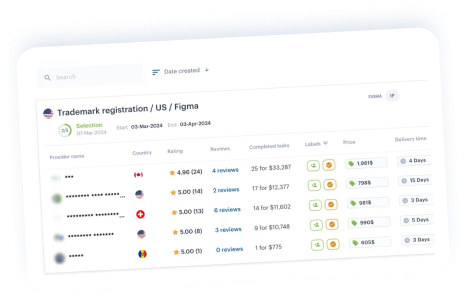For many IP managers, Excel spreadsheets, endless email reminders, and scattered chat messages have long been the default tools for tracking trademark deadlines. However, this approach has three painful flaws:
- The first is the high risk of missed deadlines — even a single overlooked renewal, declaration, or filing date can jeopardize brand protection.
- The second is chaos in communication: when reminders and updates are spread across inboxes, chats, and shared drives, important details inevitably get lost.
- And finally, there’s the burden of manual double-checking. Even with careful tracking, managers often feel compelled to re-verify everything by hand.
Modern trademark docketing software (TM-docketing) addresses all of these challenges through one simple promise: a centralized system where deadlines, statuses, payments, and documents are automatically tracked with zero guesswork.
What Is TM-Docketing: A “Single Source of Truth” for Your Brand
Trademark docketing software is designed to serve as a single platform for managing trademarks, deadlines, and documents. Instead of juggling multiple tools, users gain access to a unified dashboard that consolidates all cases and timelines, automates reminders for filings and renewals, and records a transparent history of every event. The system typically includes modules for case management, documentation, task tracking, payments, and reporting.
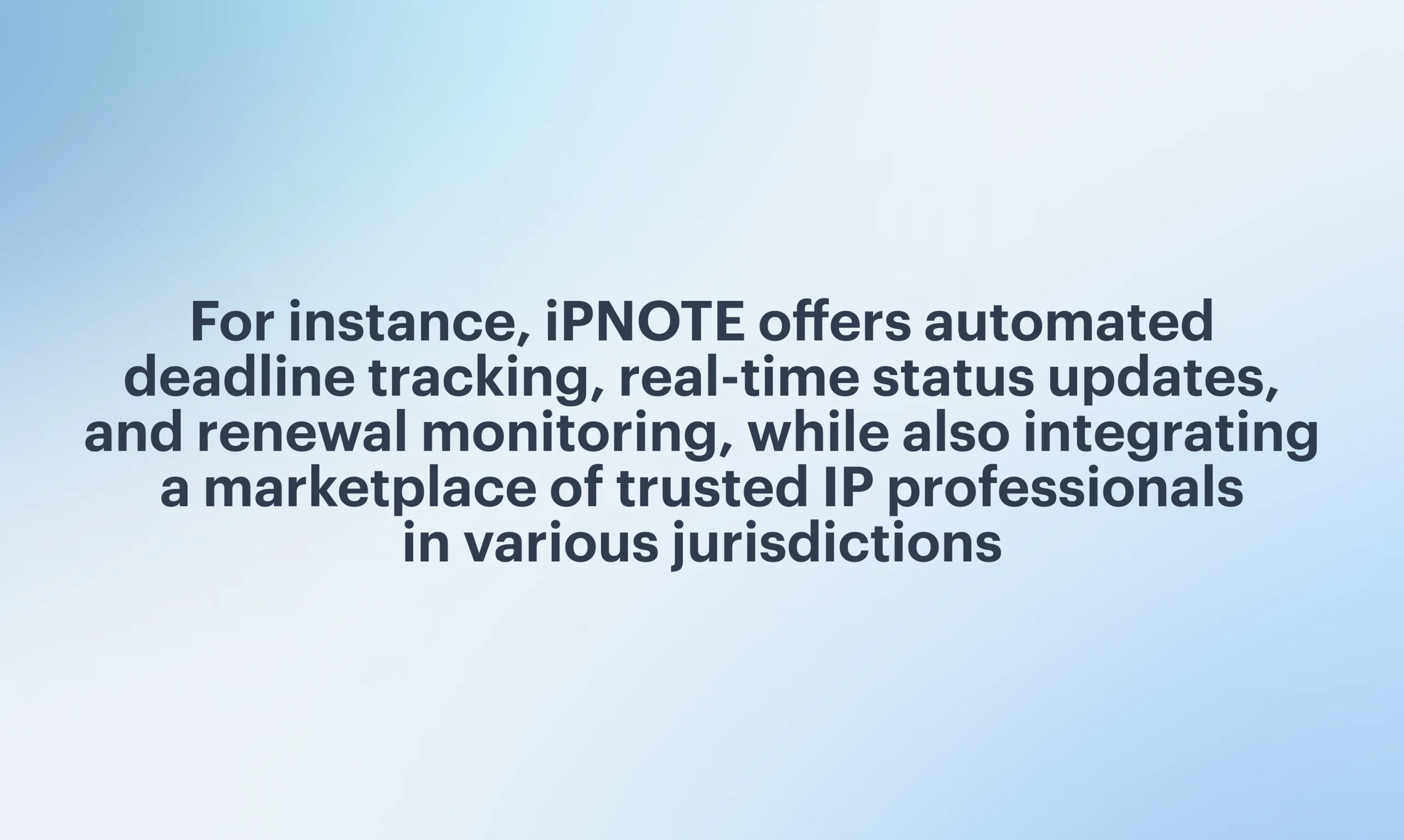
Never Miss a Deadline Again
At the heart of TM-docketing lies a sophisticated rules engine that incorporates jurisdiction-specific timelines for filings, renewals, and office actions. The system sends timely reminders and escalations, ensuring that critical dates are never missed. Every action is stored in an immutable audit log, providing complete traceability. Instead of relying on fragile personal calendars, IP managers gain a predictable, verifiable workflow that guarantees accountability and peace of mind.
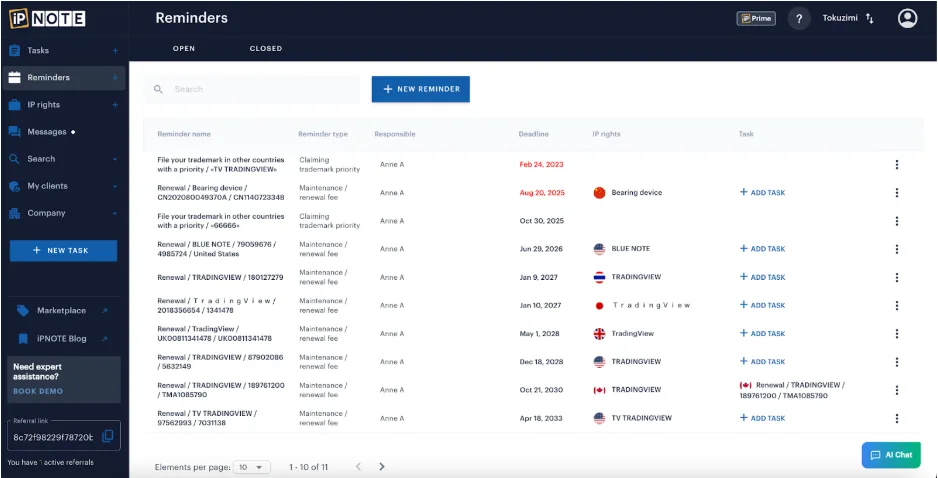
Renewals and Payments: Living in the System
Renewals and fee payments often represent the most stressful parts of IP management. TM-docketing automates control over renewals and declarations, issues automatic fee reminders, and consolidates invoices to simplify budgeting. Predictable forecasting allows teams to plan expenses efficiently, reducing penalties, improving cash flow, and eliminating last-minute financial surprises. Check our case study with the comparison of the docketing systems.
Cutting the Chaos: Documents, Tasks, and Statuses in One Place
Trademark docketing software replaces the noise of endless email threads and scattered files with a structured environment, it:
- Supports bulk docketing and automatic data imports from trademark offices
- Generates letters and reports automatically
- Maintains a centralized repository with secure access controls and instant search
- Every trademark has a complete, easily retrievable history, allowing teams to find critical information within seconds.
Many professionals will recognize the chaos of the old system — juggling emails, spreadsheets, and shared folders, and living with the constant anxiety of missing something crucial. The difference between life before and after implementing a TM-docketing system could not be clearer.
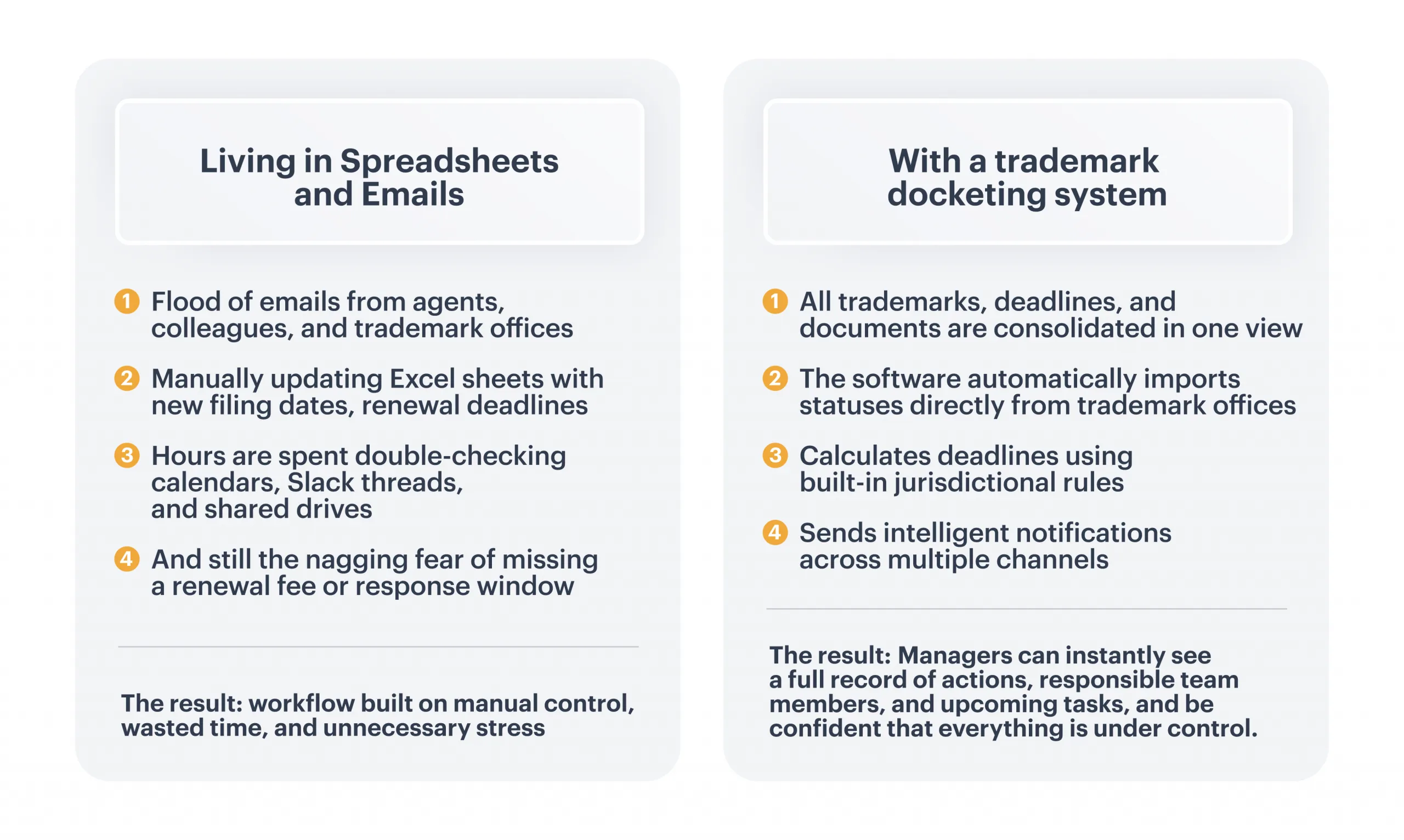
Before: Living in Spreadsheets and Emails
A typical day for an IP manager begins with a flood of emails from agents, colleagues, and trademark offices, each containing different attachments, deadlines, or reminders. The next step often involves manually updating Excel sheets with new filing dates, renewal deadlines, or payment records copied from those emails. Hours are spent double-checking calendars, Slack threads, and shared drives to make sure no detail slipped through the cracks. Despite all this effort, there’s still the nagging fear of missing a renewal fee or response window. The result is a workflow built on manual control, wasted time, and unnecessary stress.
After: One Dashboard, Zero Guesswork
With a trademark docketing system, this entire routine transforms. All trademarks, deadlines, and documents are consolidated in one view. The software automatically imports statuses directly from trademark offices, calculates deadlines using built-in jurisdictional rules, and sends intelligent notifications across multiple channels. Managers can instantly see a full record of actions, responsible team members, and upcoming tasks. Instead of hunting for scattered information, they start their day with a quick dashboard check, confident that everything is under control.
Fast and Painless Migration
Transitioning to a TM-docketing system is faster and simpler than many expect. Import templates and dedicated migration support make the process smooth, with setup typically completed within one to seven days depending on the portfolio size. Most providers also offer 24/7 onboarding assistance and a pilot “sandbox” mode where users can safely test the platform before full adoption.
Clear Pricing and Predictable Costs
Trademark teams often worry about hidden fees, but modern docketing systems provide fixed pricing that covers all users, updates, and integrations, ensuring a transparent total cost of ownership. Support and upgrades are usually included, and the ROI is clear — reduced administrative hours and lower risk of costly errors. iPNOTE, for example, even offers a freemium plan for up to 20 assets, allowing teams to explore the platform without risk. Try it for free.
Who Benefits Most
Enterprises with global trademark portfolios gain the most from TM-docketing systems due to their ability to handle vast volumes of filings, renewals, and correspondence across multiple jurisdictions. These organizations value TM-docketing for its scalability, integration with enterprise legal management tools, and adherence to international compliance standards that ensure consistency across regions.
Mid-market companies transitioning from spreadsheets or manual tracking appreciate TM-docketing’s rapid implementation and user-friendly interface. With built-in reminders and centralized data management, these companies can move from reactive deadline tracking to proactive portfolio oversight. The enhanced visibility into filing status and costs helps management make data-driven IP decisions and justify budgets to leadership.
IP boutiques and trademark agencies benefit from automated status updates, client-specific reporting, and seamless billing integration. TM-docketing reduces administrative overhead, enabling attorneys and paralegals to focus on strategic advisory work rather than manual data entry. Its client collaboration tools also improve transparency, allowing firms to deliver timely updates and demonstrate service value.
Startups and emerging brands, meanwhile, find reassurance in the platform’s reliable deadline management and built-in compliance safeguards. As they expand into new markets, TM-docketing ensures that no renewal or opposition deadline is missed, reducing the risk of costly errors. These smaller teams gain access to the same professional-grade tools used by large enterprises, providing structure and confidence during global brand growth.
A Demo Checklist: What to Look For in TM-Docketing Software
When evaluating providers, teams should ensure that the system includes:
- comprehensive deadline rules library covering key jurisdictions
- customizable reminders with escalation levels
- renewal and budget forecasting tools
- unified registry with a full audit log
A well-planned migration roadmap with a pilot mode and clear validation process is also essential, as is transparent pricing with ongoing support and updates. For a deeper look at what to consider during a software demo, read our article.
FAQ: Addressing the Big Concerns
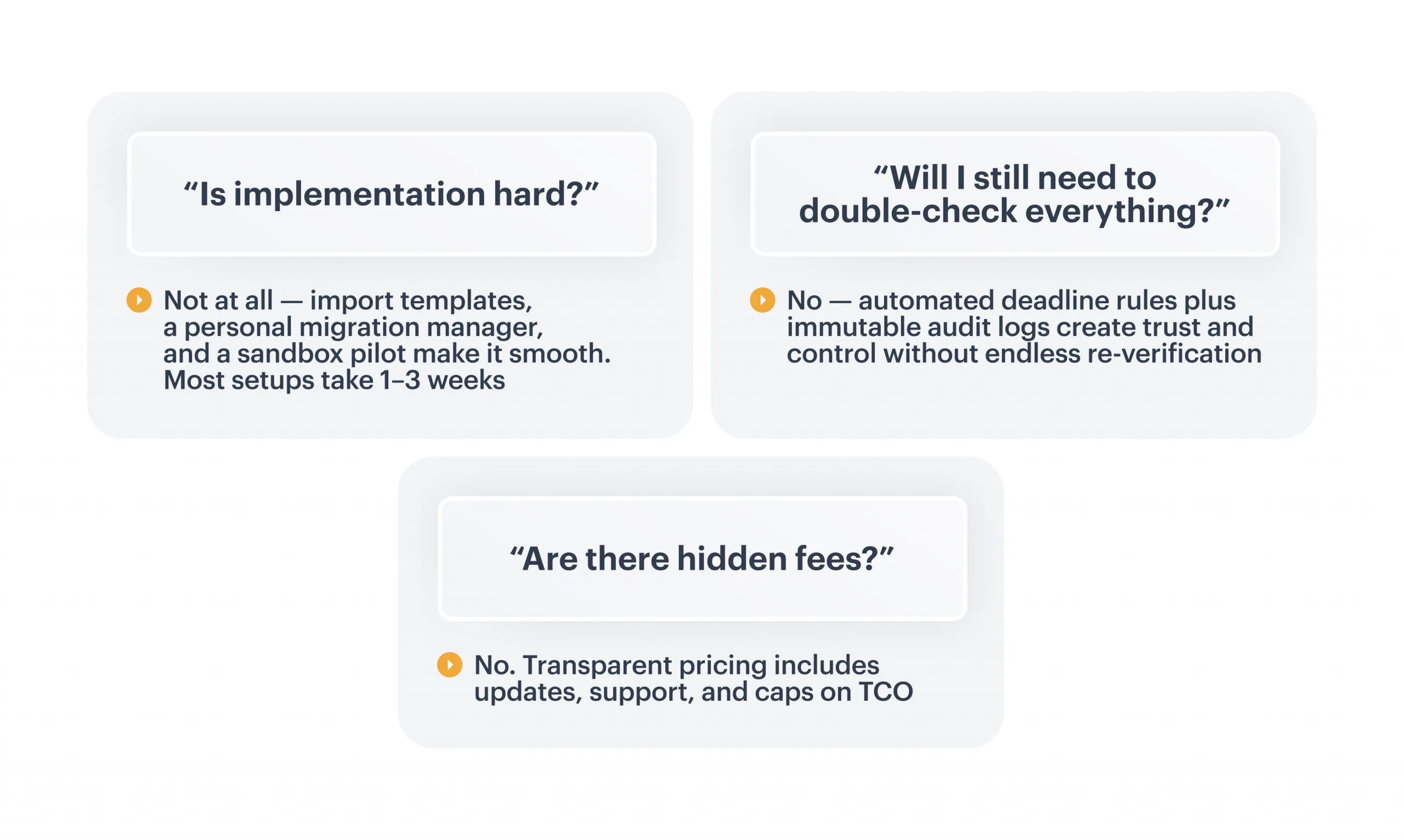
Ready to Take Control?
Start without risk: try iPNOTE for free with up to 20 assets and test-migrate part of your portfolio. Then book a demo tailored to your jurisdiction and workflows.
Result? Less manual routine, fewer missed deadlines, and a calmer, more predictable IP workflow — from the very first week.






